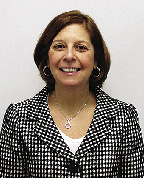During the month of June I attended the BOMA International Conference in Seattle. There were many interesting seminars including "Managing your Asset," "Tenant Relations," "Effective Communication Techniques," as well as courses on LEED certification and tools to assist in making your property more energy efficient. In addition, the conference included a trade show which offered attendees the chance to review new products and services for the real estate management field. The conference also allowed members of the real estate industry to network and share ideas and best practices.
One of the most informative programs was a general session which was titled "Real Estate 2020 - The Shape of Things to Come." This session reviewed how real estate managers will need to adjust their way of dealing with customers when it comes to managing and leasing space. By 2020, it is thought that most tenants will be giving back anywhere from 40-50% of their space due to changes in office set-ups. The main reason for this reduction in space is to the fact that by 2020 the majority of the workforce will be from Gen X and Gen Y, and the traditional workspace is not something that they feel is necessary and/or conducive to work productivity. Employers are finding that they need to redesign their space with less formal work areas and much more shared spaces to allow for more collaboration between departments and teams. Due to the ability for employees to work anywhere and anytime, the work /life balance has changed dramatically. Employees are now reachable 24/7 and are very comfortable with communicating in whatever type of media is available at any location. The work and home environments are much more intertwined and for many there are no standard work hours that must be adhered to. Employees are no longer "tethered" to their desks in order to accomplish their work. The digital age has allowed us to become very mobile and actually Gen X and Gen Y prefer an open plan, with no specific work space designated to them in order to allow for more interaction from both a learning perspective and a social perspective.
Real estate professionals will need to be attuned to this new digital age and work with tenants to design space with more shared areas, amenities throughout the space (versus a centralized café/conference area set up) and realize that many employees consider the office as a "tool kit" versus just a place to go. Video conferencing has become much more prevalent in large (especially global) organizations and having the capability to work collaboratively with employees (regardless of location/time zone) allows for all voices to be heard, which provides higher employee satisfaction, thus leading to company success. While retrofitting existing space to meet these new requirements may be daunting to some, engaging the Gen X and Gen Y staff to assist with this is the best way to ensure the space meets everyone's requirements while still allowing for some "private" space for more detailed work. It is important in the real estate field that we take this new way of doing business into account when designing buildings and realize that having effective digital communications available throughout the site will be the way of the future. Real estate managers that understand these requirements and can assist business transition into this new way of thinking when it comes to building design will, in the long run, be most successful.
Debbie Smith, president of Southern Connecticut BOMA, is with Cartus, Danbury, Conn.
Tags:









